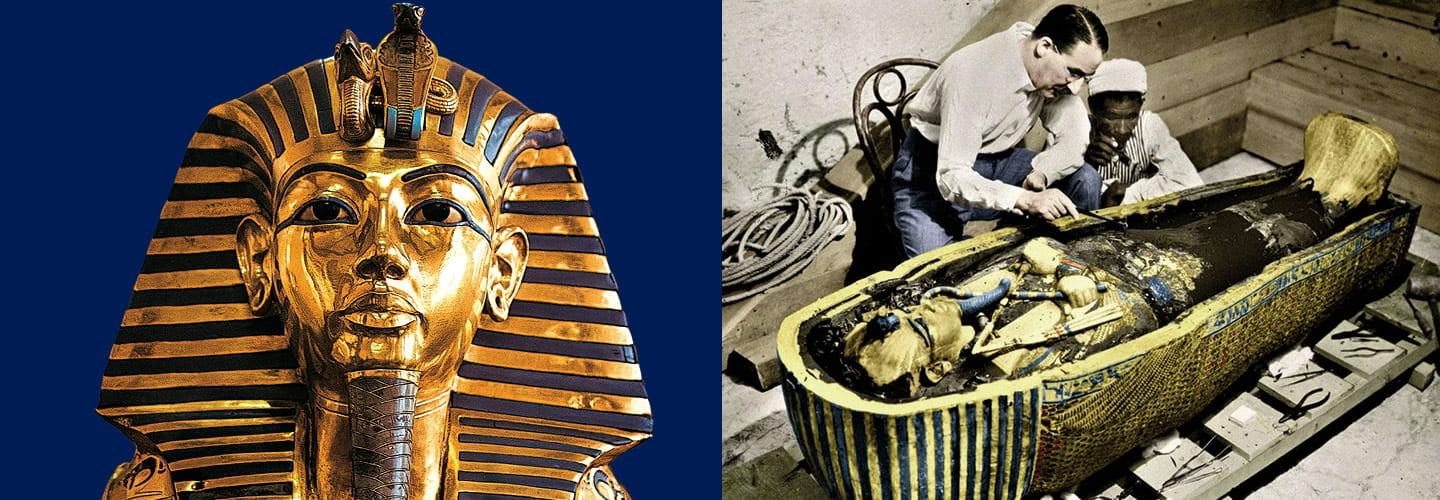Time was running out. British archaeologist Howard Carter and his crew had spent years digging in Egypt’s blistering desert heat, searching for the long-lost tomb of an ancient Egyptian boy king—Tutankhamen.
Lord Carnarvon, the English investor funding the project, was ready to give up. He had given Carter a few more months. Carter, however, was convinced he was close. Clues, such as an ancient cup bearing the king’s name, had been found nearby.
Finally, on Nov. 4, 1922, Carter’s team of Egyptian workers made a promising find: They unearthed the first step of a stone staircase leading down to a door.
Time was running out for British archaeologist Howard Carter. He and his crew had spent years digging in Egypt’s blazing desert heat. They were looking for the long-lost tomb of an ancient Egyptian boy king, Tutankhamen.
Lord Carnarvon, the English investor funding the project, was ready to give up. He had given Carter a few more months. But Carter felt he was close. Clues, such as an ancient cup bearing the king’s name, had been found nearby.
Finally, on Nov. 4, 1922, Carter’s team of Egyptian workers made a promising find. They unearthed the first step of a stone staircase leading down to a door.

